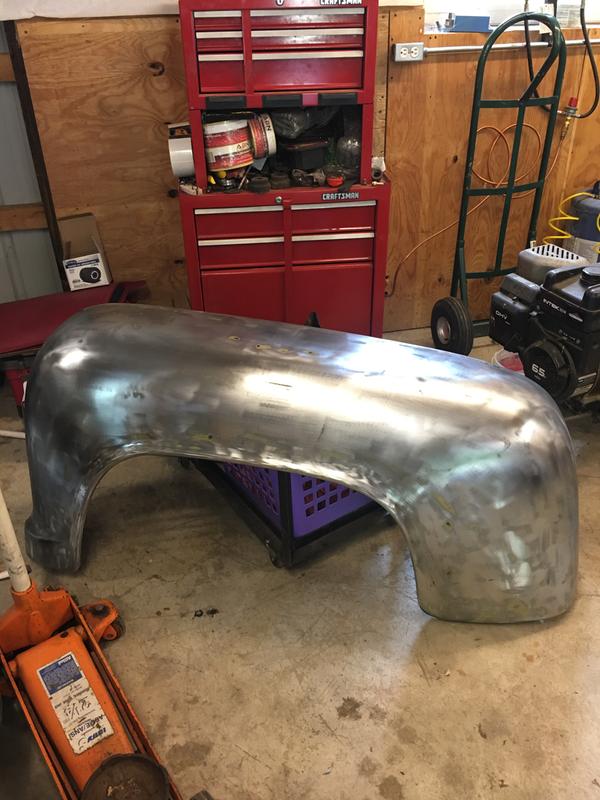When it comes to stripping a vehicle of all its paint there are only a couple options. Today I want to cover the two most popular ways to knock this job out of the park while showing the pros and cons of each to help you make the most informed decision.
We’ll start with the Contour SCT which is the left image. We developed this tool in house and launched it with amazing results, the reviews our customers have left speak volumes to how well this tool can tackle a paint stripping job. This extremely versatile tool plugs into any 110 volt outlet.
Just look at this picture submitted by one of our customers. He stripped this entire part in only 30 minutes. We recommend using the abrasive drum first to quickly chew through the old paint and body filler getting you down to clean bare metal. Then, grab the drum that was included with the purchase of the SCT and go back over the metal. This Finishing drum will leave the perfect finish on the steel for primer to adhere. This two step process will save you tons of time. Now there are two things it isn’t as good at. Getting in tight nooks and crannies or rust pitting. Luckily, on a very small percentage of parts have these areas in which you cannot reach.
Now let’s hop over and talk about the media blasting option. These are great at getting paint, body filler, and rust out of even the tight nooks and crannies and deep rust pitting. Simply choose your desired grit of media and start blasting. The pictured blaster is our Pressure Blaster Model 110 which can hold up 110 pounds of media to increase the amount of time you can blast without taking a break. For general paint and rust removal we often recommend 90 grit aluminum oxide. Media blasting is as easy as point and shoot with the dead man valve we pair each unit with. You can even turn this unit into a soda blaster if you wish to do more gentle blasting work by adding our Retro Fit Kit. Now for the very important information about what it takes to operate a blaster. While they are very good at getting every single spot of paint, body filler, and rust they do require a large volume of air to operate properly. This means you will need an air compressor capable of producing at least 10 CFM @ 80 PSI. Generally this means a 60 gallon compressor with a 4 HP motor or larger.
I hope this article helps clear the dust created by each of these techniques so allow you to chose the method which will work best for you. As always feel free to visit Eastwood.com for all your DIY automotive tool needs.




